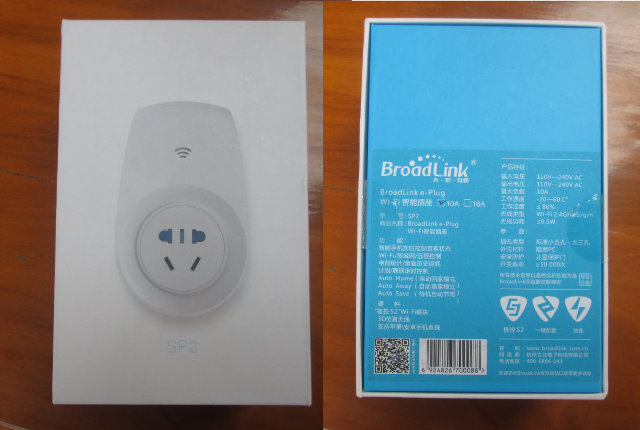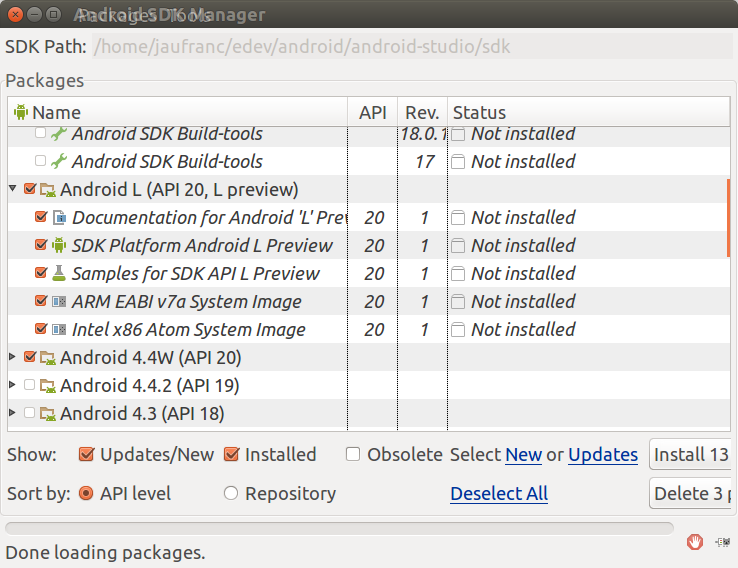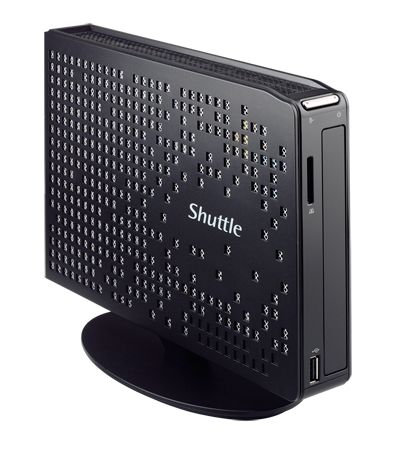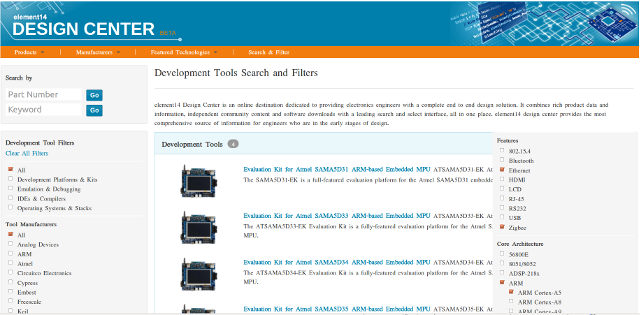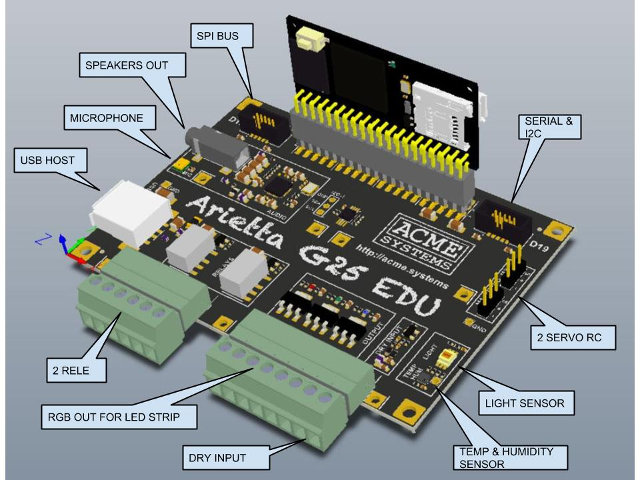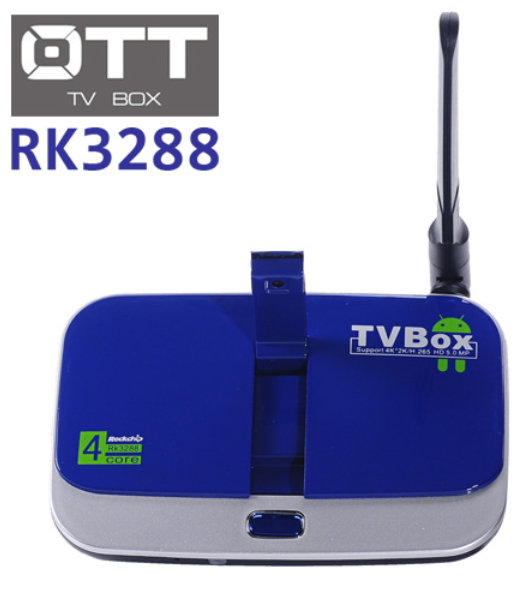With all the activity / fitness trackers on the market now, I wanted to try on,e but I did not find they were good value, but when DealExtreme sold Vidonn X5 fitness tracker for about $27, I decided to jump and have a try. You can synchronize data with Bluetooth 4.0 Low Energy enabled Android 4.3+ and iOS mobile device, but I don’t have any, so instead I used a netbook running Windows XP for initialization and fitness data tracking. Vidonn X5 Unboxing Pictures I was quite surprised how fast I received the parcel. It was shipped by China Post, yet I received it within 9 days. Usually small items can be found without package and shipped in bubble envelopes, but this device comes in a relatively nice looking plastic box. The box just contains a user’s manual in Chinglish, and the fitness band. Two clips are used to fastness […]
Amptek iCon is an ARM Cortex M3 Board for IoT Running uCLinux (Crowdfunding)
Up until now, the only company I ever heard running Linux on ARM Cortex M3/M4 was EmCraft Systems with their system-on-modules and development kits based on Freescale Kinetis, STMicro STM32 and Actel Smartfusion micro-controllers. But there’s now another option thanks to Ampek Technologies, a Canadian based company funded in 2002, and their iCon (Internet Connectivity) board featuring NXP LPC1788 Cortex M3 connected to 64MB RAM which is plenty enough to run uCLinux. The board can be used for applications such as industrial control systems, wireless sensors, or smart home appliances. The iCon board specifications are as follows: MCU – NXP LPC1788 ARM Cortex-M3 MCU @ 120MHz with 512 KB flash memory, and 96 KB SRAM System Memory – 64MB SDRAM (external chip) Storage – 32MB flash for firmware Connectivity – 802.11 b/g/n, Bluetooth 4.0. Ethernet is supported via an add-on module USB – USB 2.0 host port, mini-USB debug port […]
Review of Broadlink SP2 Wi-Fi Smart Plug
I have received Broadlink SP2 Wi-Fi smart socket for Android and iOS thanks to GearBest, a Chinese e-retailer, that was kind enough to send a sample for review. I’ll start by showing some pictures of the package and device, and report the results of my review with an Android phone (ThL W200). Broadlink SP2 Unboxing Pictures The company send me the parcel via DHL, and I received in the package below, the top with the picture, and the bottom with specifications in Chinese. There’s only the smart plug in the package. The top is a universal plug, but the bottom is a Australian/ Chinese plug, so most people would need a wall adapter. It support 110 to 240V AC up to 10 amperes, consumes less than 0.5W without load, and it designed to handle 50,000 on/off events. The thing that surprised me was the size of the plug at first, […]
How to Try Android L Developer Preview in Ubuntu 14.04
As mentioned yesterday, Android L Developer Preview was about to be released, and this is now done with images for Nexus 5 “Hammerhead” and Nexus 7 “razor” available right now. However, if you don’t have either of these devices, or you’d rather not install a beta version on the phone you use everyday, you can still give a try in the SDK emulator. I’ve tried Android L myself in Ubuntu 14.04. Here’s what you have to do: Install Android Studio IDE in Ubuntu, and Create a new Project or open an existing project (Android Studio Version is now 0.61) Click on Tools->Android->SDK Manager in the top menu, and select the Android L (API 20, L Preview) packages as shown below, and click on “Install xx Packages” button. Accept the license as required, and click Install. This step can take countless hours… Now we’ll need to create a Virtual Device for […]
Shuttle Fanless mini PCs Powered by Intel Celeron J1900 Quad Core Bay Trail SoC Sell for $200 and Up
A little while ago, Bay Trail-D (Desktop) motherboards started to show up for about $60 to $70, and I estimated a complete system with RAM, enclosure, and 1TB storage would cost around $250. Thanks to Shuttle XS35V4 and XS36V4, you can now buy such quad core system pre-assembled for well under $300, or just around $200 for a barebone system without RAM or storage. Shuttle XS35V4 / XS36V4 specifications: SoC – Intel Celeron J1900 Quad core processor (Bay Trail-D) @ with Intel 7th generation graphics. System Memory – 1x DDR3L SO-DIMM, up to 8GB DDR3 1333 MHz Storage – 1x 2.5″ SATA HDD / SSD bay, 1x SD card reader. XS35V4 only: optical drive. Connectivity – 10/100/1000M Ethernet (Realtek RTL8411), 802.11b/g/n WLAN support (1T1R), Audio – Realtek ALC269, 2.1 channel High Definition Audio Front panel Power button Power & HDD LEDs SD Card reader 1x USB 2.0 port XS36V4 only […]
Element14 Design Center Helps You find a Development Board and Tools for Your Project
Element14 has just launched a Design Center, currently in beta version, which let’s you do parametric searches for development kits, debuggers, software tools, by tools vendor, silicon manufacturers, board features, and processor architecture / type. So for example if you want to work on a low power Linux based gateway with Ethernet and Zigbee, you may search for a board with Ethernet and Zigbee, and comes with an ARM Cortex A5 processor. In this example, the website returned four SAMA5D3x evaluation kits from Atmel which support Ethernet, as well as Zigbee via an external module. Then if you want to find which tools are available from Atmel, you can select “Emulation and Debugging”, “IDE & Compiler”, and “Operating Systems & Stacks”, as well as “Atmel” and “ARM” core architecture which will return Atmel Studio 6, and a JTAG emulator. It’s not quite perfect, as the only features you can search […]
Acme Systems Arietta EDU Open Hardware Baseboard for Arietta G25 SoM (ARM9)
Arietta G25 is a tiny system-on-module (SoM) powered by Atmel SAM9G25 ARM9 processor and running Linux that sold for a discount earlier this year (9.9 Euros) for early backers, and is now available for 20 Euros, and support an optional Wi-Fi module for as low as 7 Euros extra. Acme Systems, the company who made the board, is now considering designing and manufacturing an open source hardware baseboard for the module, and is asking for feedback from the community before going ahead. Currently the idea is to have a baseboard with the following: Arietta G25 SoM connector (Vertical mount) 1x USB Host port I2C Sensors – Temperature and Humidity sensor, Light sensor Mosfet output for RGB led strip 2x relay output 1x filtered dry input 2x servo RC motors output Audio interface with embedded microphone and jack for PC speakers using Wolfson WM8731 codec Expansion headers for external modules already […]
Rockchip RK3288 Based OTT928 / CS928 Android Media Player Sells for $114 and Up
In my list of RK3288 TV boxes, I mentioned that although many products had been announced with Rockchip’s quad core Cortex A17 SoC, no reliable company had listed prices yet, except for one selling for $99.99 on Aliexpress, but with no clear shipping date, and nobody to answer potential customer requests. One reader left a comment about OTT-928 Android TV box also featuring a 5MP retractable camera and (pre-)selling on Asiapads for $119.99 including shipping with delivery currently scheduled for July 20, but it can also be purchased via one vendor on Aliexpress for as low as $114 under the name CS928 but with only 8GB flash, instead of 16GB on OTT928. CS928 / OTT928 hardware specifications: SoC – Rockchip RK3288 quad core CortexA17 @ 1.8 GHz + Mali-T764 GPU with support for OpenGL ES 1.1/2.0 /3.0, and OpenCL 1.1 System Memory – 2GB DDR3 Storage OTT928 – 16GB NAND […]


